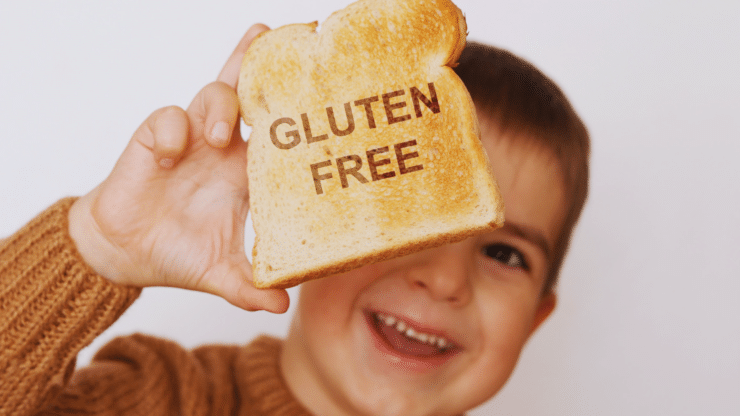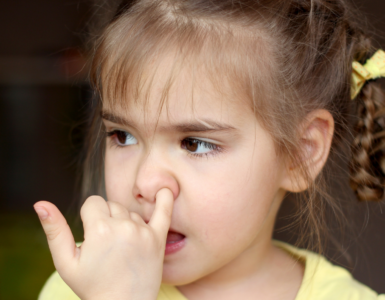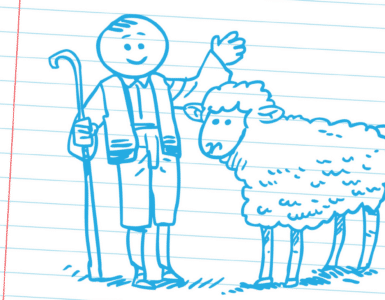Ask any parent, and they will tell you that kids get sick. From sniffles to tummy issues, it’s just a fact of life that kids are uniquely capable of finding germs wherever they go.
But, if you suspect your child is dealing with something more than just the common cold, it can quickly become overwhelming to figure out what is going on. So, if you’ve found this article in your search to get more answers on gluten intolerance, and learn more about the potential signs, then keep reading.
By this guide’s end, we hope you’ll have a clearer picture of gluten intolerance, who can be affected, the signs of gluten intolerance, and tips for moving forward.
What is gluten?
To start, let’s talk about gluten. For those who may not know, gluten is a protein found in grains, such as wheat, rye, and barley. When wheat and other grains are processed to make flour, which goes into bread, pasta, cereals, and other grain products, the gluten protein ends up in the end product. Nowadays, in response to the rise of gluten intolerance and allergies, many companies remove this protein from the grain before processing it, making the product gluten-free. In addition to foods, gluten is in beverages and self-care products, such as vitamins, cosmetics, and certain medications (1).
What is gluten intolerance?
The term gluten intolerance is often confused with Celiac disease; however, the two are actually quite different. Gluten intolerance is a sensitivity, which is why it’s commonly known as non-celiac gluten sensitivity. Symptoms of gluten intolerance are often diffuse and delayed, making it somewhat difficult to recognize. Many people may not even realize they have a food intolerance (2).
Celiac disease, however, is an autoimmune response to gluten protein. It occurs when your body mistakenly identifies the gluten protein as an intruder, like viruses or bacteria. Your body then launches an immune response to protect itself; however, this response can damage the lining of your small intestine, leading to malabsorption of nutrients and other long-term health concerns (1,3).
Who can have gluten intolerance?
Anyone can develop gluten intolerance, unfortunately. Some may be young when they first see symptoms, while others can build gluten sensitivity later. Approximately 6% of people in the United States will develop a gluten intolerance at some point, affecting more women than men. Celiac disease, however, is less common, and only about 1% of people in the US have it (1).
Because gluten intolerance can affect people at any age, children can experience it at the same rate as adults.
What are some signs of gluten intolerance in children?
Unfortunately, symptoms of gluten intolerance and Celiac Disease are very similar, so it may be hard to distinguish between the two in children without further testing; however, common symptoms of gluten intolerance include (4):
- “Brain fog”: this brain fog could result in attention and focusing difficulties or simply increased fatigue after gluten exposure.
- Headaches or migraines: While one headache may not point to gluten intolerance, chronic headaches and migraines are not typical of children. So, any continued complaint of a headache should raise a flag that something more may be happening.
- Skin issues: Persistent rashes, acne, or itchy skin may indicate gluten sensitivity.
- Tingling, numbness, or joint pain: Numbness or tingling in any part of the body is always concerning, so this symptom should alert you that something is going on. And persistent joint pain without explainable circumstances can also be due to gluten sensitivity.
- Gi issues: Bloating, stomach aches, diarrhea, and constipation can also result from gluten intolerance.
If your child begins to display or complain of any of the above symptoms, it may be helpful to start taking notes on when symptoms begin and how long they last, and any foods, self-care products, and medications they have used recently, as this step may help make the connection between gluten-containing foods and products and the onset of symptoms.
What should I do if I suspect my child has a gluten intolerance?
If you suspect that your child has a gluten intolerance, an initial step you can take is to start taking notes. As mentioned before, one of the difficulties with food sensitivities is that the symptoms are often diffuse and delayed.
Then, schedule an appointment with your pediatrician. To diagnose gluten intolerance, your doctor will review your child’s history of symptoms. The notes you have kept up until then will be helpful for your child’s pediatrician to get a clear picture of what may be happening. As your doctor performs tests to check for Celiac disease, your child will continue to eat foods that have gluten. This can include blood and skin tests.
ALSO: We Should Rediscover the Lost Art of Family Mealtime
If the Celiac test is negative, your pediatrician may still suspect a gluten intolerance. In that case, your child will have to avoid gluten foods for six weeks to determine if symptoms improve or resolve.
If your child’s symptoms resolve during those six weeks, they have a gluten intolerance (1).
Tips for moving forward after a diagnosis
The time following a gluten intolerance diagnosis can be confusing for both parents and children, and figuring out how to move forward can feel daunting.
Since you’ve already had some practice in avoiding gluten in your home, this process may not feel so challenging; however, when your child goes back to school or other places, it may not be as easy to avoid gluten.
Here are some tips on how to help your child handle their gluten sensitivity in school and elsewhere (5):
- Talk to your child about washing their hands if they come in contact with a food that has gluten or even Play-Doh. While your child may know not to eat the food (or Play-Doh), they may inadvertently ingest it if it’s still on their hands.
- Pack a gluten-free lunch or treat. To help your child avoid gluten at lunchtime, you can pack food, and if the class is celebrating a birthday or other special occasion, you can ensure your child has something to enjoy by sending gluten-free treats for everyone to enjoy.
- Talk to your child about not sharing snacks. Kids often have a giving spirit and want to share their food, but this is a no-no if your child has a gluten intolerance.
- Talk to the teacher about Play-doh and find alternatives to projects that include it. If Play-doh is necessary, your child can still participate using modeling clay, which does not have gluten.
A final word and some resources
In closing, most expect kids to get the sniffles here and there, but it can be nerve-wracking to think that something more is happening. If your child is experiencing symptoms like bloating, diarrhea, constipation, skin issues, headaches, and joint pain, your child may have a gluten intolerance.
The best way to start addressing this is to start documenting your child’s symptoms and see their pediatrician, who will help you figure out what to do next. And while things may feel daunting at first, many people learn to manage their gluten intolerance. Moreover, companies are constantly developing new products, making life that much easier.
For more resources, you can check out:
Celiac Kids Connection
https://www.celiackidsconnection.org/
Children’s Hospital Boston Celiac Disease Program
https://www.childrenshospital.org/programs/celiac-disease-program/patient-resources
Kid’s Corner
https://celiaccommunity.org/celiac-disease/gluten-free-diet-educational-resources/
Sources:
- Gluten Intolerance: Symptoms, Test, Non-Celiac Gluten Sensitivity (clevelandclinic.org)
- Food Sensitivity Explained (everlywell.com)
- What is Celiac Disease? | Celiac Disease Foundation
- Recognizing Gluten Intolerance | Children’s Hospital of Philadelphia (chop.edu)
- 6 Ways You Can Help Gluten-Free Kids Cope With School (verywellhealth.com)









Add comment